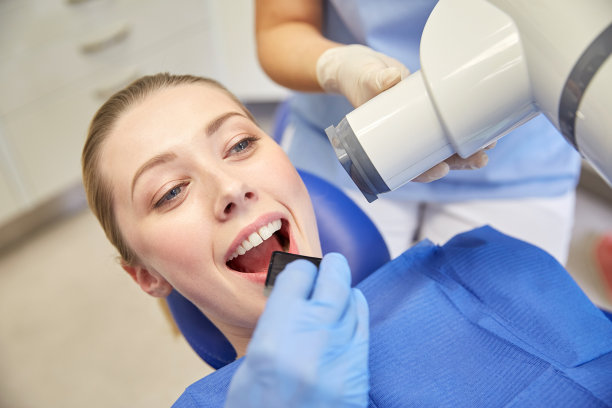The Essential Guide to Understanding the Process and Aftercare of Tooth Extraction for Optimal Healing and Recovery
Summary: Tooth extraction is a common dental procedure that may be necessary due to various reasons, such as severe decay or overcrowding. Understanding the process of tooth extraction and the vital aftercare is crucial for optimal healing and recovery. This comprehensive guide walks you through the entire journey from preparation to recovery, emphasizing the importance of following post-operative care instructions, managing pain, and recognizing signs of complications. Following these guidelines not only alleviates discomfort but also contributes to a smoother recovery process. With the right knowledge, you can navigate tooth extraction with confidence and achieve successful healing.
1. Understanding the Tooth Extraction Process

The first step in tooth extraction is a thorough evaluation by your dentist, who will typically take X-rays to assess the tooths condition and its position in relation to surrounding structures. This assessment is crucial as it helps the dentist determine the most appropriate method for extraction. There are two main types of extractions: simple and surgical. Simple extractions are performed on visible teeth, while surgical extractions are necessary for teeth that are not easily accessible, such as impacted wisdom teeth.
Before the procedure, the dentist will discuss sedation options with you. Many patients prefer local anesthesia, which numbs the area around the tooth, while others may opt for sedation to help alleviate anxiety. Understanding your choices is important, as this can help make the procedure more comfortable for you. Your dental team will guide you through the options to ensure your comfort throughout the process.
On the day of the extraction, it is essential to follow your dentists pre-operative instructions, which may include fasting if sedation is involved. Once you arrive for the procedure, the dentist will prepare you and begin by administering the chosen anesthetic. After ensuring you are comfortable and numb, the dentist will carefully remove the tooth, minimizing any trauma to the surrounding tissue.
2. Post-Operative Care Instructions
After the extraction, the first few hours are crucial for your recovery. It is important to keep applying pressure to the extraction site with a clean gauze pad to control bleeding. Initially, you may develop some swelling, so applying ice packs to the outside of your cheek can help reduce this. Rest is also essential; lying down with your head elevated can further assist in minimizing discomfort and swelling.
Your dentist will provide specific instructions regarding pain management, usually recommending over-the-counter pain relievers or prescribed medication. Its essential to take these medications as directed, as pain control is key to your recovery experience. Additionally, make sure to stay hydrated and maintain a nutrient-rich diet with soft foods that are easy to chew, such as yogurt or mashed potatoes.
Oral hygiene should not be neglected, but you should avoid rinsing your mouth vigorously or using mouthwash for at least 24 hours post-extraction. Gently brushing your teeth while avoiding the extraction site will help keep your mouth clean without disrupting the healing tissue. Following these guidelines will promote optimal healing and minimize the risk of complications.
3. Managing Pain and Discomfort Effectively
Post-extraction pain can vary from person to person; therefore, managing discomfort properly is critical. In addition to following your dentists recommendations for pain relief medications, consider alternate methods such as relaxation techniques or gentle breathing exercises that can help reduce anxiety and the perception of pain. Listening to soothing music or practicing mindfulness can also be beneficial.
Keeping your head elevated when resting or sleeping can help in reducing pain and swelling. Using an extra pillow or reclining chair may make a significant difference. Additionally, staying hydrated is essential, as dehydration can heighten discomfort and prolong recovery.
If you experience excessive pain or your discomfort worsens after a few days, it is crucial to reach out to your dentist. This could be a sign of complications such as dry socket, which requires professional intervention. Staying in touch with your dental provider during recovery will enable you to address concerns early and ensure a smooth healing process.
4. Recognizing Signs of Complications
Being aware of the signs that indicate a complication after tooth extraction is vital for your health. While some discomfort is normal, symptoms such as prolonged bleeding, severe pain after the initial recovery period, or a fever may indicate complications that need immediate medical attention. Recognizing these signs early can prevent more serious issues from developing.
Dry socket is a common complication where the blood clot at the extraction site fails to form properly or becomes dislodged. Symptoms include a sharp, throbbing pain radiating from the extraction site, and a foul taste or odor in the mouth. If you experience such symptoms, contact your dentist promptly, as they may need to provide additional treatment.
Infection is another serious concern following tooth extraction. Signs of infection include swelling, increased pain, and pus at the extraction site. If you notice any unusual changes, don’t hesitate to consult your dentist for evaluation and potential treatment. Monitoring your recovery closely ensures that you can address any potential issues effectively.
Summary:
Understanding the tooth extraction process and the importance of aftercare is key to a successful recovery. From preparing for the extraction to managing pain and recognizing potential complications, thorough knowledge empowers patients to navigate the post-operative phase with confidence. Effective communication with your dentist and adhering to aftercare instructions are essential components to ensure optimal healing.
This article is compiled by Vickong Dental and the content is for reference only.


